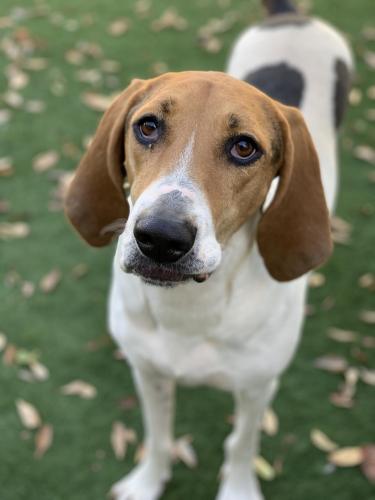Preventing Issues with Pandemic Pups
Guest Blog by Tressa Fessenden-McKenzie, KPA-CTP
Bringing a new dog home during the pandemic is exciting, and is a great way to make these uncertain times feel a little more fun. But although we’re all making the best of this “new normal,” eventually we’ll be shifting back into some semblance of the lives we had before. How will our pups cope with this change?
This strange new life we’ve been navigating may be all a young pup knows, or can quickly become an adult dog’s routine! So taking some steps now to prepare can help smooth the transition down the road.
Socialization
Most of us have pretty small circles right now, so it’s hard to give your pup interactions with a variety of new people, but you can still take her out and about to observe people from a distance. If you ever have socially distanced outdoor gatherings with friends or family, be sure to bring your pup along!
When it comes to getting to know other dogs, playgroups and even play dates may be off the table for the most part, but going on socially distant parallel walks is a great opportunity to not only exposure your dog to other well-adjusted dogs, but also to begin building the skill of staying focused on you in the presence of dogs as opposed to trying to greet every dog you encounter!
Socialization is all about positive experiences, so quality is
really more important than quantity. Focus on making each
interaction as positive as possible by monitoring your dog’s body
language for any signs of stress or discomfort, and modifying the
experiences as needed. Always have delicious treats on hand, too.
By pairing good things like a favorite treat with new
experiences, you can create positive associations for those new
things!
Getting Comfortable with Absences
Right now, most people are home way more often than normal. Between working remotely and distance learning, it’s easy for our dogs to get used to the idea that they will always have company. This can present problems down the road if you need to get back to a normal work and school schedule, and your pup will be home alone as a part of his normal routine.
The most important thing we can do to get your pup ready for new routines, is to practice separations soon and often. Figure out where he’ll be staying when you’re back to leaving the house more often – a crate, a puppy-safe gated off area, a room in your home? Set it up as it will be when routines change so that he can acclimate now.
Pairing absences with special long-lasting chews or enrichment puzzles is a great way to help teach your pup that spending time alone isn’t so bad, and to build good feelings about the area he’ll be staying in while you’re gone.
For some dogs, it can even help to simply start by having him in a separate room occasionally, even while the family is home. Then work up to leaving the house altogether. Start small – you don’t have to dive right into an 8-hour day! But, get in the habit of making sure everyone in the family leaves for short periods of time, while your pup hangs out at home. To make sure this goes smoothly, it can help to set up a camera of some kind so you can monitor your dog for signs of stress. We want to keep the absence as short as needed for the dog to be relaxed while you’re away, and build up gradually as your dog’s tolerance for alone time increases.
Getting Help
Have any training challenges or behavior issues that you could use some help with? The Sacramento SPCA has tons of behavior resources on our website. We are also offering phone consultations, and are happy to help you work through whatever issues you may be experiencing.


Comments
Post new comment